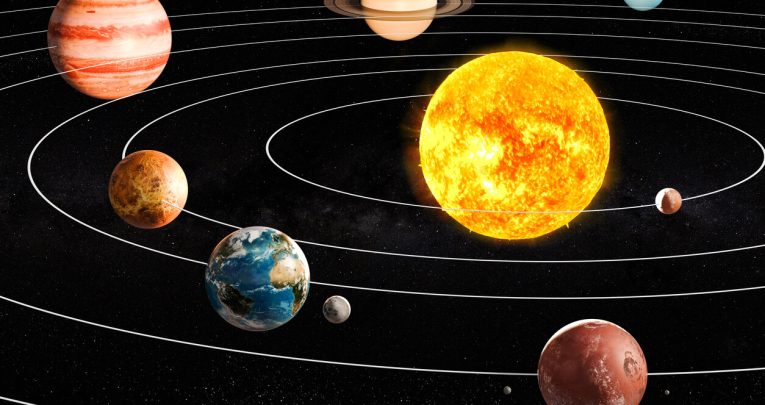8 Solar System facts to wow students

Open up new worlds for KS1/2 children and inspire awe and wonder with knowledge of space, says Dr Maggie Aderin-Pocock…

1 | Venus is the hottest planet
Surprisingly, Venus is the hottest planet in the Solar System, even though it sits further from the sun than Mercury.
The average temperature is around 450°C. When I cook a pizza at home, I set my oven to about 200°C – so Venus is more than twice as hot! Venus is also the third brightest object in the sky after the Moon and the Sun.
2 | The Moon has no atmosphere
The Moon has no atmosphere, which means there are no winds blowing over its surface.
No wind means that there is nothing, apart from impacts with asteroids and meteorites, to remove marks on the surface. This makes the Moon a sort of time capsule.
Objects that land on it can sit there, undisturbed, for millions and millions of years. The footprints of the Apollo 11 astronauts, Neil Armstrong and Buzz Aldrin, will just sit there unless an impact destroys them.

Facts about our solar system
Looking for fun facts about the solar system? This solar system information Powerpoint contains facts about the solar system, planets and why we have night and day. It’s perfect to use in the classroom when introducing this topic to children.
3 | The largest volcano is on Mars
Olympus Mons, the largest volcano in the Solar System, is an awe-inspiring 22km tall – that’s nearly three times the height of Mount Everest. At 624km wide, it would cover most of France.
Mars’ volcanoes are much bigger than the ones on Earth, partly because Mars’ crust doesn’t move about in the way that Earth’s does. This means that the liquid rock underneath can only escape from a few places, creating very large volcanoes.
However, the tallest peak in the Solar System is thought to be Rheasiliva, which sits on the asteroid Vesta. This is 22.5km high from its base.
4 | The Sun contains 99.8% of all mass in the Solar System
Compared to Earth, it is enormous! It is around 1.39 million km in diameter and weighs about 333,000 times as much as Earth. The Sun is so large that over one million Earth spheres could fit inside it.
5 | Jupiter is REALLY massive
Jupiter is two and a half times more massive than all the other planets in our Solar System combined. Beneath the beautiful, swirling cloud of Jupiter’s atmosphere, we don’t know if the planet has a solid surface. If a person could stand on one of Jupiter’s clouds, the force of gravity would be about 2.4 times higher than what we experience here on the Earth’s surface. So, a person who weighs 45kg on Earth would weigh more than 100kg on Jupiter!
6 | Jupiter has a raging storm
A giant storm, named the Great Red Spot, has been raging in Jupiter’s atmosphere for more than 300 years. It is so colossal that it measures 1.3 times the width of Earth.
The shape of the Great Red Spot is also changing. It seems to be shrinking and is now half the size that it was 100 years ago.
7 | Uranus has the coldest atmosphere in the entire Solar System
Temperatures here can drop as low as -224°C. That’s more than five times colder than the North Pole in Winter.
The reason Uranus’s atmosphere is so cold is thought to be because the planet has a surprisingly low core temperature compared to other planets.
This may have something to do with the fact that Uranus is the only planet in the Solar System that spins on its side. Perhaps it suffered a huge impact in the past that tipped it over.
8 | Pluto was named by a child
Pluto is the only astronomical body named by an 11-year-old. When the dwarf planet was first discovered in 1930, a British girl, Venetia Burney, came up with the name Pluto, after the Roman god of the underworld that had the power of invisibility.
Other suggestions were Zeus, Cronus and Percival.
The Disney character, Pluto, came later in the same year and was named after the dwarf planet.
Dr Maggie Aderin-Pocock is author of Dr Maggie’s Grand Tour of the Solar System, illustrated by Chelen Ecija, out now in hardback (£12.99, Buster Books).








